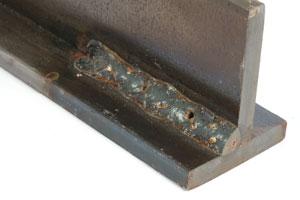What is Porosity in Welding: Comprehending Its Reasons and Enhancing Your Abilities
What is Porosity in Welding: Comprehending Its Reasons and Enhancing Your Abilities
Blog Article
Porosity in Welding: Identifying Common Issues and Implementing Finest Practices for Avoidance
Porosity in welding is a prevalent issue that typically goes undetected till it creates significant issues with the honesty of welds. In this conversation, we will certainly discover the crucial aspects contributing to porosity development, analyze its detrimental impacts on weld efficiency, and go over the best techniques that can be adopted to reduce porosity occurrence in welding processes.
Typical Root Causes Of Porosity

One more regular culprit behind porosity is the existence of impurities on the surface of the base steel, such as oil, oil, or rust. When these contaminants are not properly removed prior to welding, they can vaporize and come to be entraped in the weld, causing problems. Additionally, making use of unclean or wet filler products can introduce impurities right into the weld, adding to porosity concerns. To reduce these typical reasons for porosity, complete cleaning of base steels, appropriate protecting gas choice, and adherence to optimal welding parameters are important methods in accomplishing premium, porosity-free welds.
Impact of Porosity on Weld High Quality

The visibility of porosity in welding can considerably compromise the architectural honesty and mechanical residential or commercial properties of bonded joints. Porosity creates gaps within the weld steel, compromising its general strength and load-bearing capability. These spaces act as stress concentration points, making the weld much more prone to cracking and failure under applied lots. In addition, porosity can lower the weld's resistance to rust and other environmental elements, even more diminishing its durability and efficiency.
Welds with high porosity levels have a tendency to exhibit reduced influence stamina and decreased capability to warp plastically before fracturing. Porosity can impede the weld's capacity to efficiently transfer pressures, leading to premature weld failing and potential safety and security risks in vital frameworks.
Best Practices for Porosity Avoidance
To improve the architectural integrity and quality of welded joints, what specific procedures can be executed to decrease the occurrence of porosity during the welding process? Porosity avoidance in welding is important to make sure the integrity and stamina of the last weld. One efficient method appertains cleansing of the base metal, removing any pollutants such as rust, oil, paint, or wetness that could bring about gas entrapment. Making certain that the welding tools is in excellent condition, with tidy consumables and ideal gas flow prices, can additionally significantly lower porosity. Additionally, maintaining a steady arc and controlling the welding specifications, such as voltage, current, and take a trip speed, helps produce a consistent weld pool that decreases the risk of gas entrapment. Using the right welding method for the specific material being welded, such as readjusting the welding angle and gun placement, can further prevent porosity. Routine examination of welds and prompt remediation of any concerns recognized throughout the welding process are important methods to stop porosity and produce high-quality welds.
Relevance of Proper Welding Strategies
Implementing correct welding techniques is extremely important in making certain the architectural stability and quality of welded joints, constructing upon the foundation of reliable porosity prevention steps. Extreme warmth can lead to raised porosity due to the entrapment of check these guys out gases in the weld swimming pool. In addition, using the appropriate welding criteria, such as voltage, current, and take a trip rate, is vital for achieving sound welds with very little porosity.
In addition, the choice of welding process, whether it be MIG, TIG, or stick welding, need to align with the particular demands of the project to ensure ideal outcomes. Proper cleaning and preparation of the base steel, in addition to picking the appropriate filler material, are also essential components of skillful welding techniques. By sticking to these finest methods, welders can lessen the risk of porosity formation and generate high-quality, structurally sound welds.

Checking and High Quality Control Actions
Testing procedures are crucial to detect and prevent porosity in welding, making sure the strength and resilience of the last product. Non-destructive testing approaches such as ultrasonic screening, radiographic screening, and aesthetic inspection are commonly utilized to determine potential problems like porosity.
Performing pre-weld and post-weld evaluations is also vital in preserving quality assurance requirements. Pre-weld inspections include verifying the products, tools settings, and sanitation of the job area to avoid contamination. Post-weld assessments, on the various other hand, assess the last weld for any kind of defects, consisting of porosity, and verify that it satisfies defined criteria. Implementing a thorough high quality control plan that includes extensive screening procedures and inspections is vital to decreasing porosity issues and making sure the general quality of welded joints.
Final Thought
In final thought, porosity in welding can be a typical issue that affects the top quality of welds. By determining the usual root causes of porosity and applying finest methods for prevention, see post such as proper welding strategies and testing procedures, welders can make sure high top quality and dependable welds. It is vital to focus on prevention techniques to decrease the occurrence of porosity and keep the pop over here stability of welded frameworks.
Report this page